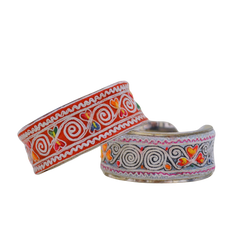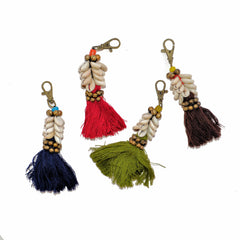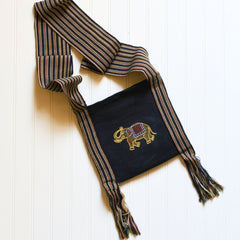
Hmong Cloth on Si...
Designed especially for The Elephant Story, these bracelets start as a sterling silver cuff brace...
ViewA Thai cultural heritage, Indigo dye is a natural dye extracted from plants. Many Asian countries have used indigo as a dye for centuries.
In Thailand, there are two species of indigo plant grown and used. One is indigofera tinctoria, known locally as Kraam which is most widely used. The other type, mostly grown in the hills, is known as strobilanthes flaccidifolius, known local as Hom.
Four months after planting indigo seeds, the leaves start turning dark green which indicates a good quality. A powder is then extracted from the leaves through a multi-step process. The powder is then mixed with various other substances to produce different shades of blue and purple.
The process of tie-dye typically consists of folding, twisting, pleating, or crumpling fabric or a garment and binding with string or rubber bands, followed by application of dye(s). The manipulations of the fabric prior to application of dye are called resists, as they partially or completely prevent the applied dye from coloring the fabric. More sophisticated tie-dyes involve additional steps, including an initial application of dye prior to the resist, multiple sequential dye and resist steps, and the use of other types of resists (stitching, stencils) and discharge.

Designed especially for The Elephant Story, these bracelets start as a sterling silver cuff brace...
View

As the fisherman pants have no pockets, the Thai and Lao people have a tradition of carrying shou...
ViewGreen Bead Hill Tribe Necklace Made by the Hmong tribe of northern Thailand Ceramic beads on cot...
View